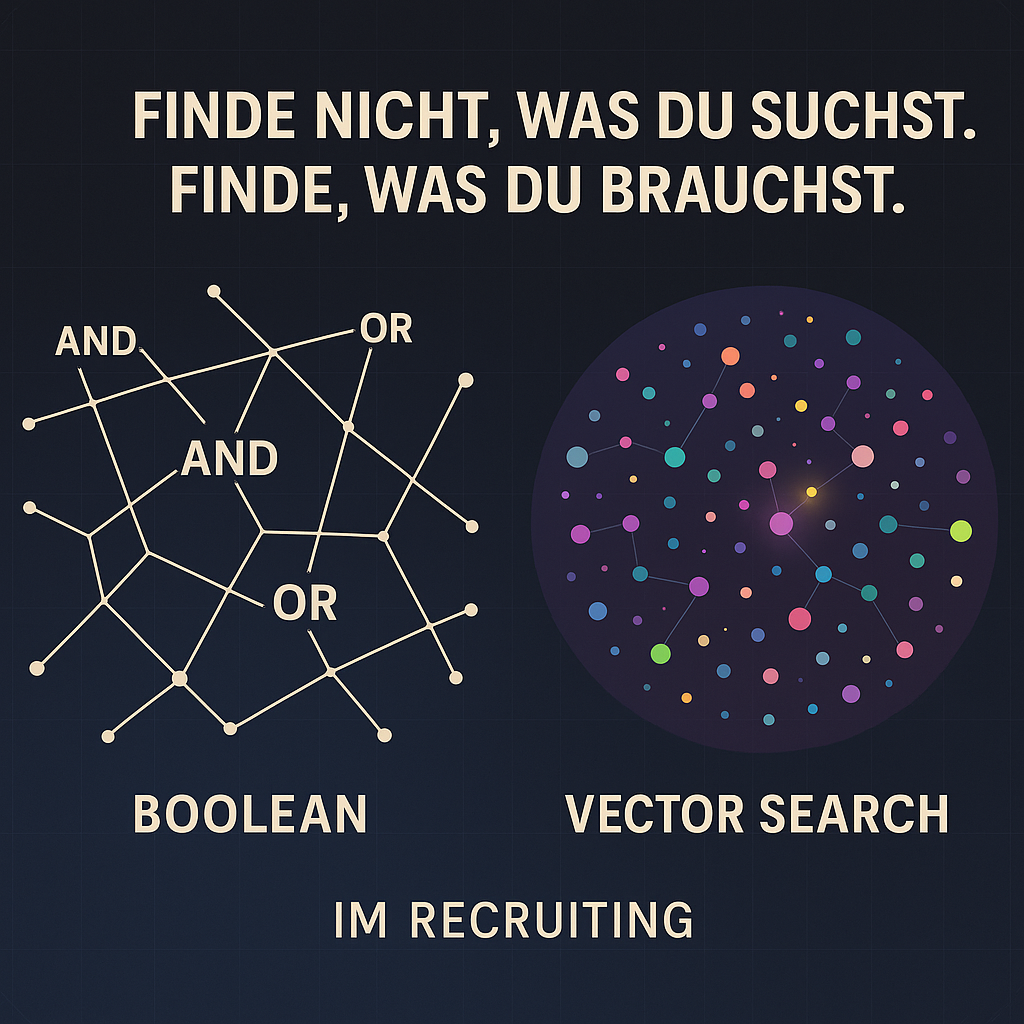1. What is OSINT - and what does it have to do with recruiting?
OSINT stands for "Open Source Intelligence" - the structured analysis of freely accessible information from the internet. Originally from the military sector, OSINT is becoming increasingly relevant in a civilian context - for example in cyber security, forensics and journalism. OSINT in recruiting
In recruiting, OSINT does not mean "googling once" - but rather the targeted merging of publicly available traces into a clear, well-founded picture of a potential candidate. OSINT is particularly valuable in tech sourcing, as many of the most sought-after talents do not maintain traditional CVs - but still leave plenty of data behind. You just need to know where.
2. Which sources are really relevant - and can be used in compliance with the GDPR?
Many recruiters shy away from OSINT - for fear of falling into a legal grey area. But: As long as you focus on restrict publicly available information and no access barriers are circumvented, the search is clean in terms of data protection law. This is also emphasised by the GDPR in Art. 14 para. 5 lit. b - information obligations apply there notif the data "originate from generally accessible sources".
Relevant OSINT sources in recruiting:
-
GitHub: Repositories, commits, pinned projects, language & tech stack
-
Stack Overflow: Questions, answers, tags → Indicator for depth & specialisation
-
Reddit / Discord / Slack: Discussion histories, tech communities, tool feedback
-
Meetup / Eventbrite: Participation in local meetups ("Kubernetes Vienna", "Rust Berlin")
-
LinkedIn: Publicly visible sections, group memberships, comment behaviour
-
Dev.to / Medium / Hashnode: Blog posts with a tech focus → Proof of Thought
3. Tools for getting started with OSINT - without hacker knowledge
You don't need a penetration testing certificate to use OSINT effectively in recruiting. Much more important is the right combination of tools and methodology.
Low-code/no-code tools for recruiters:
-
SearchMy.bio: searches organic sections on platforms such as GitHub, Dev.to etc.
-
GitHub Hovercard (Chrome Plugin): quickly shows the activity & followers of an account
-
Custom Search Engines (CSE): own Google search engines with specified sites (e.g.
site:github.com "DevOps Engineer" Berlin)
Exemplary Google operators:
-
"Senior Backend" site:dev.to -
intitle: "about me" site:github.io -
"Stack Overflow profile" "Berlin"
Advanced tools (for tech sourcers with ambitions):
-
SpiderFoot: Scans public data points automatically (OSINT Framework)
-
DataSploit: Python-based Recon tool for linking identities
4. Use case: From the GitHub handle to establishing contact
Let's assume you find a profile on GitHub: @cloudnative-max - with regular commits in Helm charts, Kubernetes projects and a top contribution to the GitOps pipeline.
How do you proceed?
-
Google search for "cloudnative-max site:stackoverflow.com" → hits on an SO profile with a similar tech focus
-
Search for identical nickname on LinkedIn → there slightly modified as "Max S. (Cloud Architect @ ...)"
-
Check whether a contact entry makes sense (e.g. like or comment on a themed article by him/her)
-
Write personalised with reference to the project: "Your helmet template on GitHub really helped me the other day. Can I briefly introduce you to a project that goes exactly in your direction?"
This turns a user handle into a real conversation - without a cold call, without a standard approach.
5. Boundaries, ethics and automation OSINT in recruiting
OSINT thrives on respect - not exploitation. That's why automated scrapers, bots or API hacks are Not only legally trickybut also strategically stupid: good talents realise whether you respect their privacy.
Rule no. 1: Only use what is visible to Google.
Rule no. 2: Provide information about your source when you contact someone.
Rule no. 3: Always ask yourself: Would I want people to do that with my profile?
Especially in a market where trust is becoming more important than titles, you can score points by using OSINT transparently. You see more - and still appear fair.
📞 Need support in the search for hard-to-find IT experts?
If you use OSINT correctly, you will find more than just CVs - you will find real technical signals. This is exactly what we do every day.
indivHR combines technological methods such as OSINT, vector search and semantic matching to make the candidates visible that others overlook.
👉 Contact us now for specific search enquiries
OSINT in recruiting





